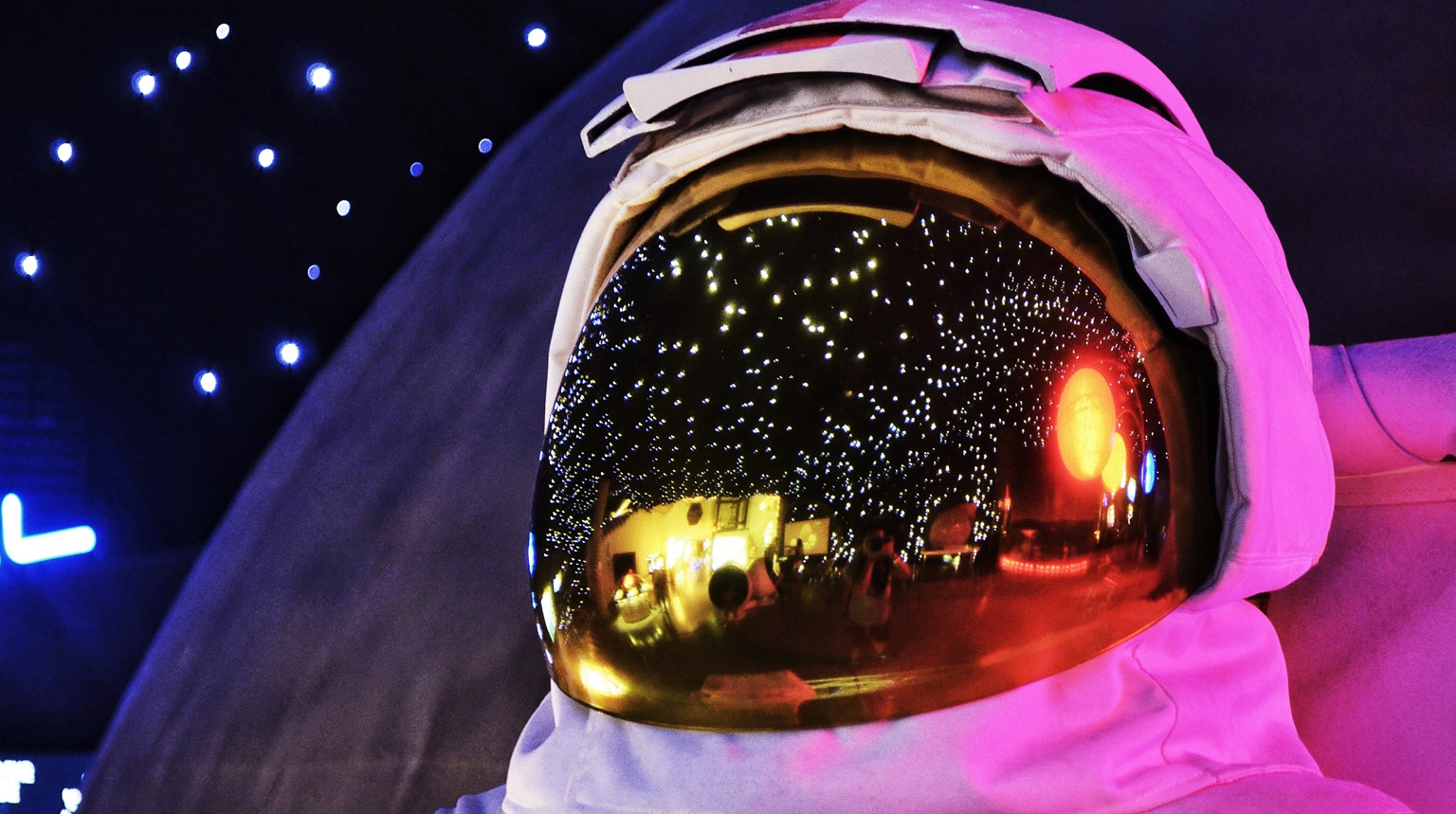4 Methods To Support Innovation In the Workplace
Developing superior skills of innovation is crucial for today’s leaders, requiring imagination and creativity to piece together the big picture. New ideas are constantly needed to respond to the global business economy. To truly be innovative, the brain must be receptive to new thoughts, and not merely recycle something that worked yesterday or last year.
There isn’t much room for creative and innovative thinking between endless meetings, conference calls, and spreadsheets. The world is so busy trying to stay ahead that we have lost the art and confidence of having new thoughts.
Mindless habitual behavior is the enemy of innovation.
Rosabeth Moss Kanter
It is so easy to slip into the comfort of routine. The brain cruises by on autopilot, time passes, and each day is completed without much thought. Humans find comfort in such routine. But, it comes at a price. Routine doesn’t exercise the brain or allow for new, innovative ideas. Fortunately, innovation can be strengthened by increasing imagination, drive, curiosity and attitude.
Imagination. What kind of world would this be without imagination? Reading popular science fiction may seem exactly that - a fun, make-believe story. But science does draw inspiration from fantasy, and science fiction forces people to question the benefits and relevance of current and future innovations and technologies.1 Imagining the impossible is the first step to creating the possible.
Drive. The drive to step in and take control of a situation tests the mettle of even seasoned leaders. In disaster situations, leaders have a valuable skill set, and they often have a chain of command in place. With a little innovation, leaders can contribute life-saving ideas and resources to catastrophic situations.
Curiosity. Curiosity comes about when we have a gap between what we know and what we don’t know. Being curious triggers dopamine production in the limbic parts of the brain, which is where the brain handles emotions and memories. Dopamine is a “reward” neurotransmitter that helps the brain make new discoveries and solve problems, and it can help us be curious without worrying about the unknown.
Attitude. Having a ho-hum or “good enough” attitude is detrimental to any office environment, and it’s especially obvious during social interactions. Applying neuroscience to your leadership style can increase social intelligence. Good leaders understand that social situations are complicated, and being able to perceive these situations will allow you to be in control of dynamic social domains.2
Create A “Make It Happen” Culture In The Office
Businesses with high levels of innovation can expect a progressive environment with outside the box thinking. Teams can work to find solutions faster, and be proactive for future problems. Conversely, conservatism, stagnation and a negative environment are more likely for organisations with low levels of innovation.
Leaders who cultivate the conditions for learning, embrace diversity, and reward the natural inquisitiveness of their teams will give innovation the opportunity to flourish. Knowledge should flow across borders, and businesses can create environments that teach workers about innovation and how the brain comes up with new ideas.
Citation:
1.https://news.nationalgeographic.com/2015/12/151209-star-wars-science-movie-film/ Menadue, C.B.; Cheer, K.D. (2017). Human Culture and Science Fiction: A review of the Literature, 1980-2016. SAGE Open 7 (3), 2158244017723690."https://doi.org/10.1177/2158244017723690" https://doi.org/10.1177/2158244017723690
2.Zaccaro, S. J. (2002). Organizational leadership and social intelligence. In R. E. Riggio, S. E. Murphy, F. J. Pirozzolo (Eds.), LEA's organization and management series. Multiple intelligences and leadership (pp. 29-54). Mahwah, NJ: Lawrence Erlbaum Associates.
- i4 Neuroleader (353)
- Leadership & Culture (325)
- Brain Health & Wellbeing (202)
- Innovation (97)
- Performance (85)
- Our News (80)
- Collaboration (68)
- Agility (53)
- Practitioner Stories (44)
- In The Press (36)
- Make Me A Leader (33)
- Balance (31)
- Integration (30)
- Imagination (29)
- Awareness (23)
- Brain-Friendly Channel (22)
- Communication (22)
- Curiosity (21)
- Inspiration (19)
- Intuition (19)
- Attitude (17)
- Courage (16)
- Adaptability (14)
- Case Studies (14)
- Drive (14)
- Generosity (13)
- Brain-Friendly Leadership (11)
- Ethics (9)
- Mental Readiness (9)
- Influence (8)
- Retreat (6)
- Brain-Friendly Leadership (1)
- Oracle Cards (1)
- 1 April 2025 (1)
- 1 March 2025 (9)
- 1 February 2025 (3)
- 1 September 2024 (4)
- 1 July 2024 (2)
- 1 June 2024 (6)
- 1 May 2024 (2)
- 1 April 2024 (3)
- 1 March 2024 (1)
- 1 November 2023 (1)
- 1 August 2023 (1)
- 1 July 2023 (2)
- 1 June 2023 (2)
- 1 May 2023 (4)
- 1 April 2023 (2)
- 1 March 2023 (7)
- 1 February 2023 (4)
- 1 January 2023 (1)
- 1 September 2022 (1)
- 1 May 2022 (3)
- 1 April 2022 (1)
- 1 March 2022 (5)
- 1 February 2022 (4)
- 1 January 2022 (4)
- 1 December 2021 (2)
- 1 November 2021 (4)
- 1 October 2021 (3)
- 1 September 2021 (6)
- 1 August 2021 (1)
- 1 April 2021 (1)
- 1 December 2020 (2)
- 1 November 2020 (1)
- 1 September 2020 (1)
- 1 August 2020 (1)
- 1 July 2020 (3)
- 1 June 2020 (4)
- 1 May 2020 (3)
- 1 April 2020 (4)
- 1 March 2020 (6)
- 1 February 2020 (4)
- 1 January 2020 (2)
- 1 December 2019 (3)
- 1 November 2019 (3)
- 1 October 2019 (5)
- 1 September 2019 (4)
- 1 August 2019 (4)
- 1 July 2019 (4)
- 1 June 2019 (5)
- 1 May 2019 (9)
- 1 April 2019 (9)
- 1 March 2019 (8)
- 1 February 2019 (7)
- 1 January 2019 (8)
- 1 December 2018 (5)
- 1 November 2018 (10)
- 1 October 2018 (16)
- 1 September 2018 (9)
- 1 August 2018 (10)
- 1 July 2018 (9)
- 1 June 2018 (8)
- 1 May 2018 (9)
- 1 April 2018 (9)
- 1 March 2018 (9)
- 1 February 2018 (8)
- 1 January 2018 (8)
- 1 December 2017 (6)
- 1 November 2017 (9)
- 1 October 2017 (9)
- 1 September 2017 (8)
- 1 August 2017 (10)
- 1 July 2017 (8)
- 1 June 2017 (8)
- 1 May 2017 (9)
- 1 April 2017 (8)
- 1 March 2017 (6)
- 1 January 2017 (3)
- 1 December 2016 (4)
- 1 November 2016 (5)
- 1 October 2016 (4)
- 1 September 2016 (2)
- 1 August 2016 (4)
- 1 July 2016 (4)
- 1 June 2016 (2)
- 1 May 2016 (3)
- 1 April 2016 (3)
- 1 March 2016 (7)
- 1 February 2016 (2)
- 1 January 2016 (5)
- 1 December 2015 (2)
- 1 November 2015 (2)
- 1 October 2015 (4)
- 1 September 2015 (2)
- 1 August 2015 (2)
- 1 July 2015 (1)
- 1 June 2015 (3)
- 1 May 2015 (4)
- 1 April 2015 (5)
- 1 March 2015 (3)
- 1 February 2015 (3)
- 1 January 2015 (3)
- 1 December 2014 (3)
- 1 November 2014 (3)
- 1 October 2014 (3)
- 1 September 2014 (5)
- 1 August 2014 (4)
- 1 July 2014 (5)
- 1 June 2014 (3)
- 1 May 2014 (1)
- 1 March 2014 (1)
- 1 December 2013 (2)
- 1 November 2013 (1)
- 1 July 2013 (1)
- 1 June 2013 (1)
- 1 May 2013 (3)
- 1 April 2013 (1)
- 1 March 2013 (2)
- 1 February 2013 (1)
- 1 January 2013 (2)
- 1 November 2012 (1)
- 1 October 2012 (1)
- 1 September 2012 (1)
- 1 August 2012 (2)
- 1 July 2012 (1)
- 1 June 2012 (1)
- 1 May 2012 (2)
- 1 April 2012 (1)
- 1 February 2012 (1)
- 1 January 2012 (1)
- 1 November 2011 (1)
- 1 October 2011 (3)
- 1 September 2011 (2)
- 1 July 2011 (1)
- 1 June 2011 (1)
- 1 May 2011 (1)
- 1 April 2011 (1)
- 1 March 2011 (1)
- 1 February 2011 (2)
- 1 January 2011 (4)
- 1 December 2010 (4)
- 1 November 2010 (3)
- 1 October 2010 (5)
- 1 September 2010 (4)
- 1 August 2010 (4)
- 1 July 2010 (3)
- 1 June 2010 (4)
- 1 May 2010 (7)
- 1 April 2010 (5)
Subscribe by email
You May Also Like
These Related Stories

Bringing A Galaxy Far Away Into Your Imagination

What if You Could Do What You've Always Wanted To Do?



No Comments Yet
Let us know what you think